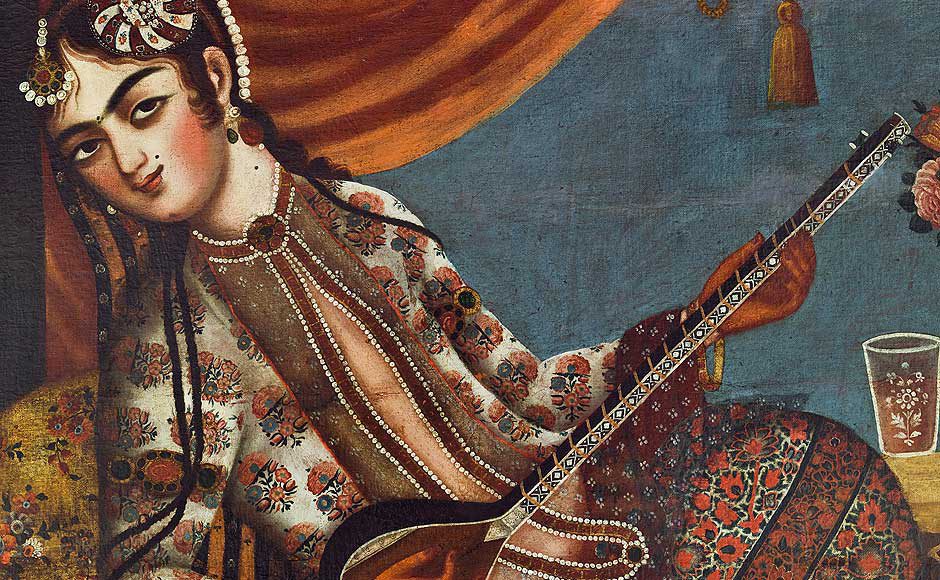Iranians and Iranian art are well known all around the world. But their art has gone through lots of changes throughout the history. In this article, we will talk about one of the temporary eras of Iranian art. This art was born in Qajar era in 19th century. The point is that Qajar art was influenced by modernity and the western world due to the new political relations. Overtime, this art got detached from its Iranian origins.
Since this subject is too vast to elaborate on, we will talk about the most important topics related to this art in this era.
Architecture, painting, and photography are the 3 main arts that have brought new ideas to the world. Also, they have been largely influenced by modernity. Although the diversity of the Qajar art is endless, we will try to give you a total picture of it.
Architecture
Have you been to an Iranian monument like a mosque or a traditional house? These architectural buildings share the same philosophy and origin. In other words, you get the same feeling from these places. You see the same design and patterns. But as a concentrate on the Qajar art and design, we will be separating the differences of this art into three branches:
- Quality: The quality of art in Qajar era has reduced, especially in the designs of the tiles. The designers of these tiles preferred low qualities so that they can concentrate on quantity.
- Colors: colors have changed from cold tones to warmer tones in Qajar artworks. Some researchers believe that the reason for this change is the effects of materialistic thinkings in this age. In other words, cold-toned colors are a symbol of spirituality. Whereas, the warm-toned colors reflect materiality.
- Patterns: patterns of geometric and plant designs turned into human forms. They tended to reflect the images of the real world.
Fortunately, most of the architectural examples of this era still exists. Tehran holds the best examples of this art since it was the capital of Qajars. By visiting the Abgineh museum, Golestan Palace, Negarestan Garden you will find the reflections of the Qajar architecture.
Below, we have explained more about the changes related to the tilework of this era:
Decorated tiles
Persian architecture is famous for its decorated tiles. Though this art has changed overtime, it is the main part of the Iranian architecture. We have already talked about the changes in the colors and designs of the tiles before. The reason for this change was the influence of Euroupe and modernity during Qajar era. We can even see some pictures of women and buildings on these decorated tiles. During the previous eras, only geometric and plant designs could be seen. But, the innovations related to printing industry and photography were the reason behind creating decorated tiles with pictures.
Another change was in the tiles’ quality. The new type of tilework was named “Haft Rang” (Seven colors) which had a low quality with lots of colors. This type of tilework was used because of its easy manufacturing and low price. Previous artists generally were using moaragh (streaky) tilework. Moaragh had a higher quality and was mostly in blue colors.
Painting
The art of Painting was not a new art in the Qajar era. It was actually a newer version of the Miniature paintings from the years before it. But the art of painting in this era was affected by modern painters and European artists. Portrait, landscape, and still life are the most popular types of painting in the Qajar era. The element of “Perspective” was brought to Iran during these years. Additionally, the painters of the time started practicing Perspective in their works.
The arts of Miniature and modern painting are really far from each other in terms of technique and philosophy. Even though they share the same root, they are different in their details. For instance, Miniatures are more symbolic than modern paintings. Or, in Miniature, the element of perspective is not observed.
Mohammad Ghaffari (Kamal-al-Molk) was the most famous painter during the late Qajar and early Pahlavi era. He learned modern painting techniques in Europe and introduced them to Iran.
Photography
The art of Photography was Naser al-din Shah of Qajar souvenir from Europe. Naser al-din shah was an art enthusiast. After coming across the art of photography, he fell in love with it and decided to bring it to Iran. He mostly took photographs of his wives (in Harem) or his trophy animals after hunting them.
The remained photos from this era helped researchers and archeologists to explore the past. This new art in Iran caused many changes in other arts like the art of tilework that we mentioned before.
In conclusion, Qajar art is conceptually and technically completely different from its previous schools of art. Several improvements in the transportation and connections between countries have brought about new modern thoughts in Persian culture. Qajar art was the reflection of this new point of view.
As mentioned before, you can visit the examples of Qajar art while visiting touristic attractions that still exist in Iran. Some of these attractions are Nasir al-Mulk Mosque in Shiraz, Dolat Abad Garden in Yazd, and Grand Bazaar in Tehran. By checking out our Blog’s posts, you can find more related subjects that will help you know more about Iranian arts.


Comment (0)